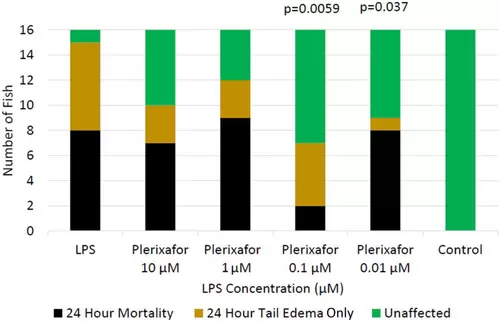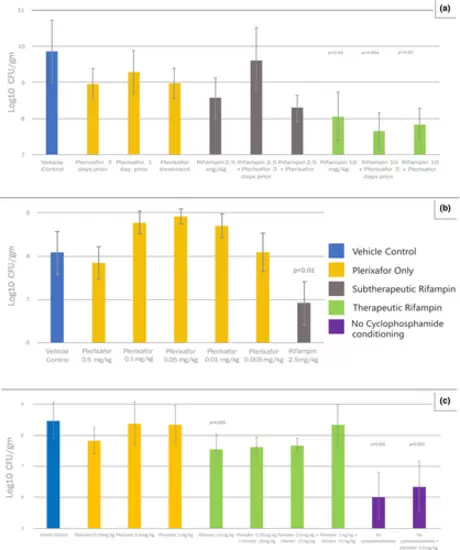- Title
-
Plerixafor for pathogen-agnostic treatment in murine thigh infection and zebrafish sepsis
- Authors
- Evans, M.O., Smith, D.M., Kress, A.T., Nadeau, R.J., Selig, D.J., Caridha, D., Racharaks, R., Langowski, T., Madejczyk, M.S., Carbaugh, C., Saunders, D., Widder, M., De Meese, J., Lee, P.J., DeLuca, J.P.
- Source
- Full text @ Clin Transl Sci
|
The number of zebrafish alive, alive with tail edema (indicative of vascular leak), or dead after 24 h of exposure to LPS. Note that deceased fish also demonstrated tail-edema (i.e., 15 fish in the LPS had tail edema). Each group had 16 fish and continuous exposure to the level of plerixafor indicated. |
|
(a) Using a murine neutropenic thigh model, groups of 10 ICR-CD1 were conditioned with cyclophosphamide. They were given plerixafor prophylactically or at the time of inoculation. All plerixafor-group mice had plerixafor dosed at 5 mg/kg SC BID. Three groups had either subtherapeutic or therapeutic rifampin. After 24 h, the thigh biopsy was performed and the tissue cultured. 24 h after culture, the samples were assessed for colony forming units (CFUs) per gram of thigh tissue. The logarithmic average is displayed. Error bars indicate standard deviation. Inlays (b) and (c) depict additional results for murine neutropenic thigh model groups as indicated. |


